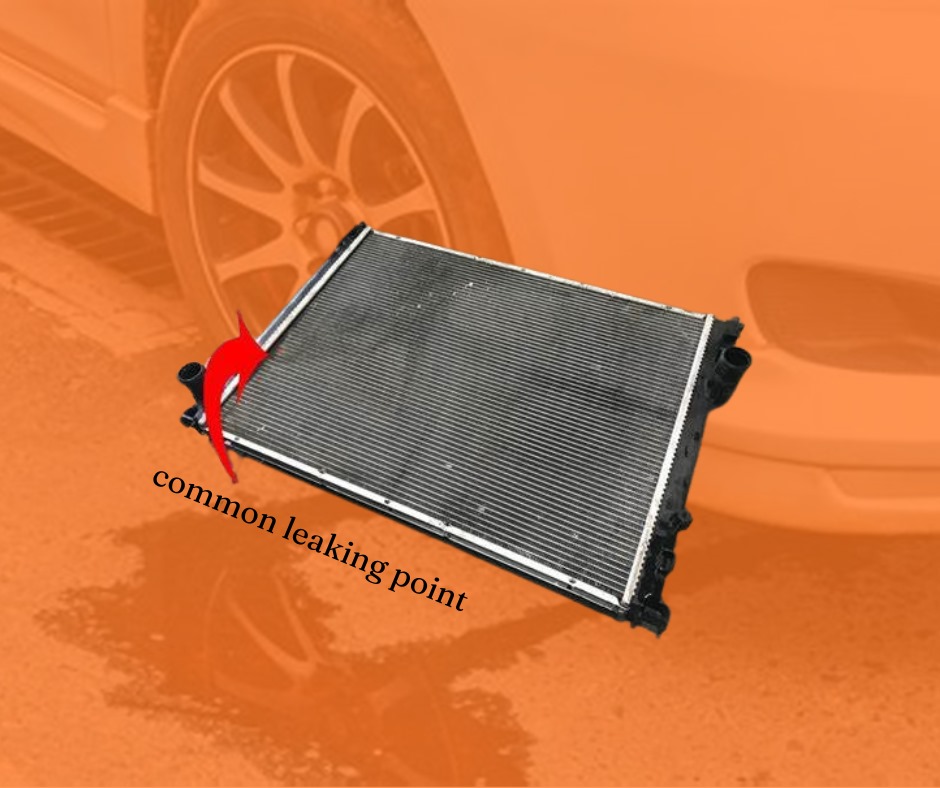Signs of a Radiator Leak

Discover the telltale signs that your car's radiator may be leaking and why it's crucial to address these issues immediately.
Identifying Visible Leaks and Where to Find Them
Spotting a radiator leak can often begin with a visual inspection. Look for signs of rust or discoloration on the radiator itself, as well as on the surrounding engine components. Radiator fluid is typically green or orange and has a slick consistency, making it somewhat easy to spot. Check the ground where your car is parked for any signs of this coolant pooling. Additionally, inspect all radiator hoses for any splits, cracks, or signs of wear that could indicate a potential leak source.
Keep in mind that leaks can also occur where the radiator connects to the hose or at the radiator cap. A compromised seal in these areas can lead to a slow, but steady, loss of coolant. Make sure to check these connections during your inspection.
Unusual Smells and What They Mean
A sweet, syrup-like odor is a common indicator of a radiator leak. Coolant has a distinct smell that's hard to miss. If you notice this unusual smell after driving your vehicle, it's worth considering that your radiator might be leaking. The smell is often stronger inside the car if the heater core, which circulates coolant to provide heat for the cabin, is leaking.
In some cases, a leaky radiator can cause the coolant to burn on the engine or exhaust, producing a burning smell. It's critical to address these odors quickly, as they can lead to more significant issues, like engine overheating.
Temperature Gauge Fluctuations and Overheating
Your car's temperature gauge is a vital indicator of its cooling system's health. If you notice erratic fluctuations in the temperature reading, or if the gauge consistently indicates a hotter-than-normal engine temperature, it might signal a low coolant level due to a radiator leak. Overheating is a serious symptom of a leaking radiator and can lead to severe engine damage if not addressed promptly.
If the temperature gauge suddenly spikes while driving, pull over as soon as it's safe to do so and turn off the engine to prevent any further damage. Remember, never open the radiator cap while the engine is hot to avoid scalding from the steam or coolant.
Puddles Under the Car: Decoding the Signs
One of the most obvious signs of a radiator leak is the presence of a puddle under the car. Coolant leaks can range from small drips to larger puddles depending on the size of the leak. The color of the puddle can often help you identify the type of fluid; for example, coolant is typically green, orange, or red, whereas water from the air conditioning system is clear.
To distinguish between the two, place a piece of white paper or cardboard under the leak. Coolant will typically leave a colored stain, helping you confirm the source of the leak.
Preventive Measures and Regular Maintenance Tips
Preventing radiator leaks begins with regular maintenance and inspections. Check your coolant level routinely and have the cooling system flushed according to your manufacturer's recommendations. Inspect hoses and connections for signs of wear and replace them as needed. It's also wise to keep an eye on your car's temperature gauge and be attentive to any changes in performance or unusual smells.
Having a trusted mechanic perform periodic checks on your cooling system can go a long way in preventing leaks. They can pressure test the radiator to ensure it's holding pressure as it should and inspect for any signs of corrosion or damage that might not be easily visible.

 Loading..
Loading..